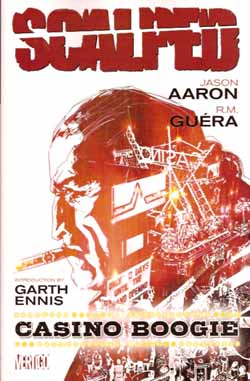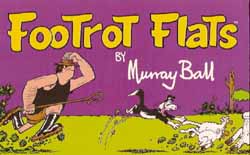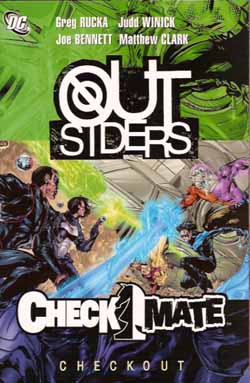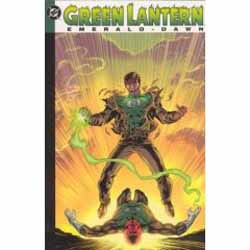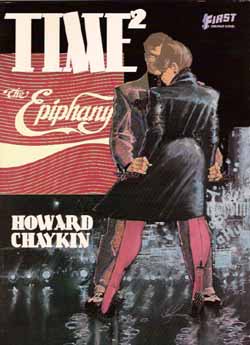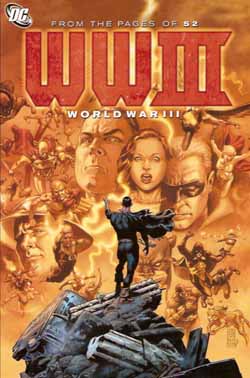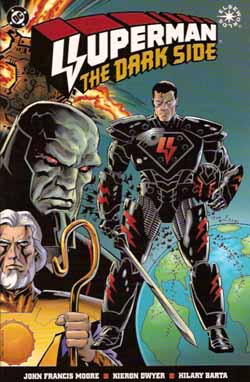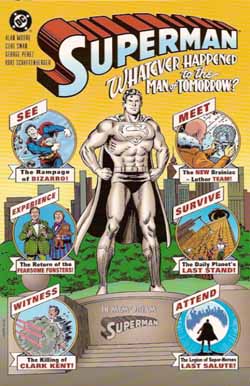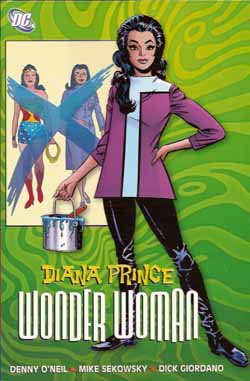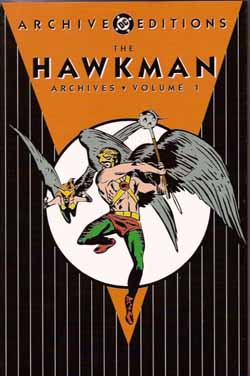
By Gardner Fox, Joe Kubert, Murphy Anderson & Carmine Infantino (DC Comics)
ISBN: 1-56389-611-7
With the superhero revival in full swing by 1961, Julius Schwartz turned to reviving one of DC’s most visually arresting and iconic Golden Age characters. Once again eschewing mysticism for science fiction (the original Hawkman was a reincarnated Egyptian prince murdered by a villainous priest), with scripter Gardner Fox and artist Joe Kubert he built a new hero for the Space Age.
Katar Hol and his wife Shayera are police officers on their own planet of Thanagar. They’ve travelled to Earth from the star system Polaris in pursuit of a spree-thief named Byth who has assaulted a scientist and stolen a drug that gives the user the ability to change into anything. ‘Creature of a Thousand Shapes’ appeared in The Brave and the Bold #34 (cover-dated February-March 1961) and is a spectacular work of graphic magic, the otherworldly nature of the premise rendered captivatingly human by the passionate, moody expressiveness of Kubert’s art. It is a minor masterpiece of comic storytelling.
The high-flying heroes returned in the next issue, stationed on Earth to study Terran police methods. In ‘Menace of the Matter Master’ they defeat a plundering scientist who has discovered a means to control elements, whilst ‘Valley of Vanishing Men’ takes them to the Himalayas to discover the secret of the Abominable Snowmen. B&B #36 saw them defeat a modern day wizard in ‘Strange Spells of the Sorcerer’ and save the world from another Ice Age whilst defeating ‘The Shadow Thief of Midway City’.
With the three-issue try-out finished the publishers sat back and waited for the fan letters and sales figures. And something odd happened. Fans were vocal and enthusiastic, but the huge sales figures just weren’t there. It was inexplicable. The quality of the work was plain to see on every page but somehow not enough people had plunked down their dimes to justify starting a Hawkman series.
A year later they tried again. The Brave and the Bold #42 (cover-dated June-July 1962) featured ‘The Menace of the Dragonfly Raiders’ and found Katar and Shayera returning to Thanagar just in time to encounter a bizarre band of alien thieves. Here was superhero action in a fabulous alien locale and the next issue maintained the exoticism – at least initially – before Hawkman and Hawkgirl returned to Midway City to defeat a threat to both worlds – ‘The Masked Marauders of Earth’. One last B&B issue followed (#44, October-November 1962), with two splendid short tales ‘Earth’s Impossible Day’ and the eerie doomsday adventure ‘The Men who Moved the World’, and then the Hawks vanished again. It certainly looked like this time the magic had faltered.
I’m a very picky cove, me, and the smallest thing can make a big difference to my reading pleasure. I’m also a huge fan of the DC Archive series, and think it’s a fine and fitting way to preserve and promote all the wonderful material created over the years. That being said, there’s a vast nostalgia component involved in re-experiencing old stories, and sometimes odd things strike you.
In 1989, when DC was first testing out the trade collection market, the six Fox/Kubert Hawkman issues were an obvious choice for packaging. Standard-sized, laminated card-covers and heavy, newsprint paper stock was used rather than the thin glossy paper used in modern Archive hardbacks. I’m looking at both now and I have to say that the colour in the old paperback just looks more appetizing, more “correct,†than the slick hues of the more expensive edition. If you are a grizzled old Fa… traditionalist like me you might want to see if you can track down Hawkman, ISBN: 0-930289-42-0.
What that old book doesn’t have, however, is the end of the saga. Convinced he was right Schwartz retrenched and in 1963 Hawkman returned! Again! Mystery in Space had been the home of Adam Strange since issue #53 (see DC Archive: Adam Strange vol. 1, ISBN: 1-4012-0148-2) and with #87 (November 1963) Schwartz moved the Winged Wonders into the back-up slot. Still written by Fox, Kubert’s moody art had been replaced with the clean, airy linework of Murphy Anderson. ‘The Amazing Thefts of the I.Q. Gang!’ was followed a month later by ‘Topsy-Turvy Day in Midway City!‘, and ‘Super-Motorized Menace!‘ the month after that.
These were brief, engaging action pieces but issue #90 was a full length story teaming the Hawks and Adam Strange in a classic end-of the-World(s) epic. ‘Planets in Peril!’, illustrated by Carmine Infantino and Murphy Anderson and the final tale in this Archive edition, was also the last Hawkman back-up. From the next month, and after three years of trying, Hawkman would star in his own title.
Comics are a funny business, circumstances, tastes and fashions often mean that wonderful works are missed and unappreciated. Don’t make the same mistake that readers did in the 1960s. Read these astounding adventures and become a fan. It’s never too late.
© 1961-1964, 2000 DC Comics. All Rights Reserved.
